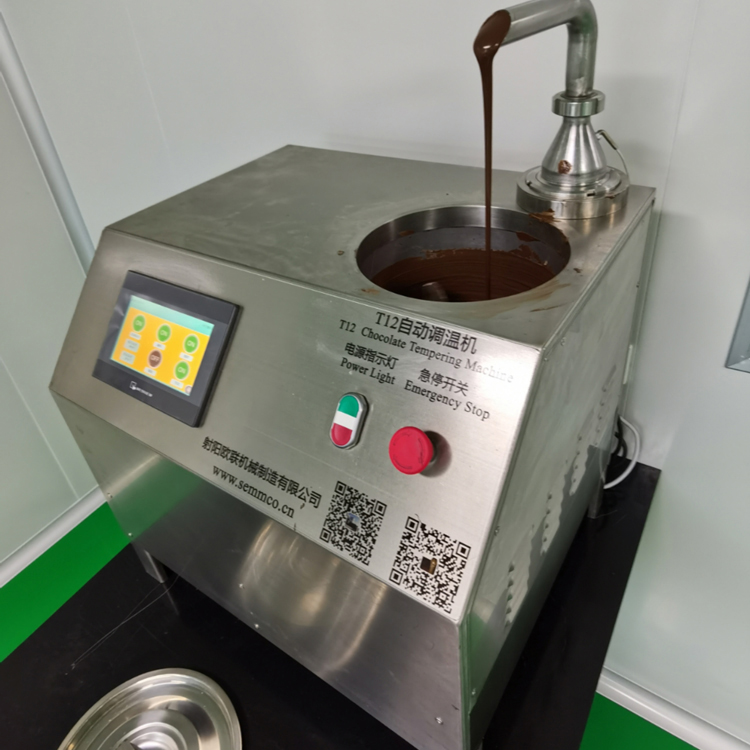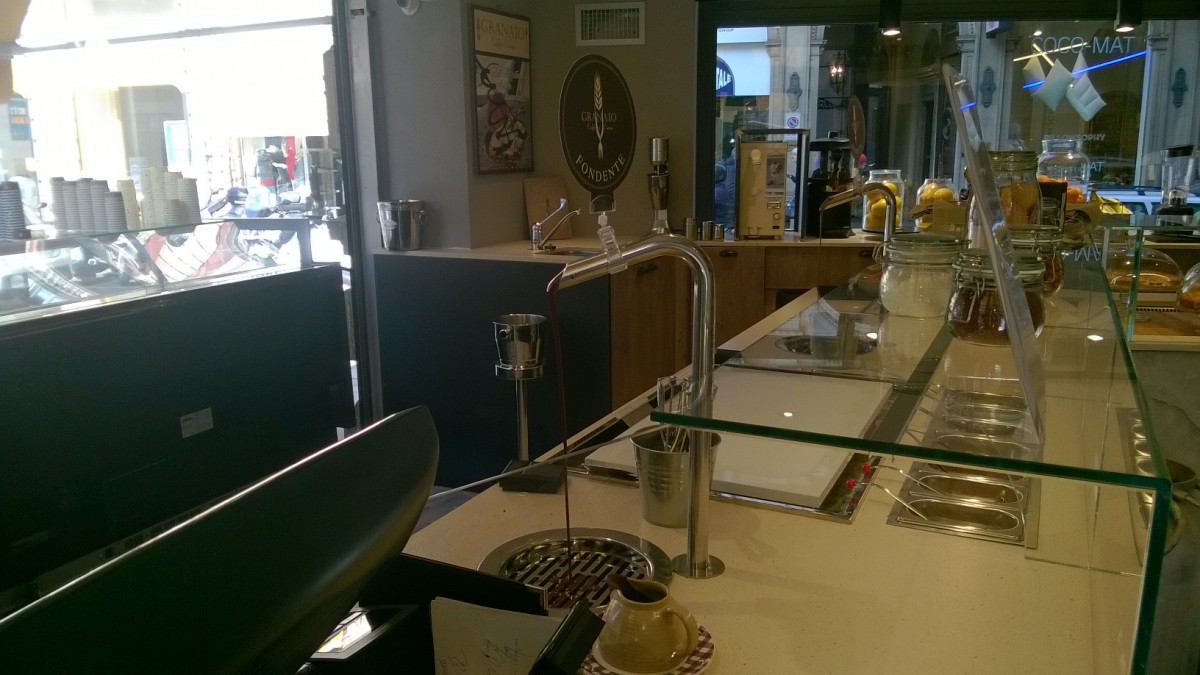What is a chocolate machine?
A chocolate machine, also known as a chocolate making machine, is a piece of equipment used in the production of chocolate products. These machines are designed to automate the various processes involved in creating high-quality, delicious chocolate treats.
The history of chocolate machine can be traced back to the 18th century, when the process of making chocolate was done entirely by hand. This was a labor-intensive and time-consuming process, with cocoa beans being roasted, shelled, and ground by hand. However, with the industrial revolution came the development of machines that could mechanize the production of chocolate.
Today, chocolate machine come in a variety of shapes and sizes, each designed for a specific task in the production process. From roasting and refining cocoa beans to molding and packaging the final products, chocolate machines have revolutionized the chocolate industry, making it more efficient and providing a greater variety of chocolate products for consumers to enjoy.

Types of Chocolate Machines
1. Roasting machine
The first step in the process of chocolate production is roasting the cocoa beans. Roasting enhances the flavor and aroma of the beans while also removing any moisture. This is a crucial step in the production process as the quality of roasted beans directly impacts the final product’s taste and texture.
Roasting machines are typically cylindrical in shape and use heat to evenly roast the cocoa beans. These machines can be set to a specific temperature and roasting time, ensuring consistency in the roasting process. Some roasting machines also have a cooling function to quickly cool down the beans after roasting.
2. Cracking and winnowing machine
After roasting, the cocoa beans are cracked to separate the outer husk from the inner nibs. The nibs are then winnowed to remove any remaining husk pieces. This process is essential as the husk can give chocolate an undesirable bitter taste.
Cracking and winnowing machines use different methods such as rollers, blades, or air pressure to break the beans and separate the husks. These machines are highly efficient, saving time and labor compared to doing this process by hand.
3. Grinding and refining machine
The next step in the production process is grinding and refining the cocoa nibs. This process involves crushing the nibs into a paste, also known as cocoa liquor, and refining it to achieve a smooth texture.
Grinding and refining machines come in various sizes, from small tabletop machines to large industrial ones. They use heavy rollers or stones to grind and refine the cocoa mass, resulting in a smooth, creamy texture.
4. Conching machine
Conching is the process of continuously mixing and aerating the chocolate mass at a high temperature. This step helps to improve the texture and flavor of the chocolate by removing any excess moisture and acidity. The longer the conching process, the smoother and finer the chocolate will be.
Conching machines have large agitators that continuously mix the chocolate for several hours. Some machines also have a built-in temperature control system to ensure that the chocolate is kept at a consistent temperature.
5. Tempering machine
Tempering is a crucial step in chocolate production as it gives the chocolate its shiny appearance and crisp texture. This process involves heating and cooling the chocolate in a specific way to ensure the formation of stable cocoa butter crystals.
Tempering machines use different methods such as agitation, heating, and cooling to achieve the desired consistency. They are available in both manual and fully automated versions, making it easier to temper large quantities of chocolate.
6. Molding machine
After tempering, the chocolate is poured into molds to give it its final shape. Molding machines come in various sizes and shapes, from small hand-operated machines to large automated ones.
These machines use vacuum technology to ensure that the chocolate is evenly distributed in the molds, resulting in consistent and well-defined shapes. Once the chocolate has cooled and solidified, the molds are opened, and the chocolate is removed, ready for the next step in the production process.
7. Enrobing machine
Enrobing is the process of coating a center with a layer of chocolate. This is commonly used for chocolate-covered nuts, fruits, and other confectionery items. Enrobing machines use a continuous process of coating the centers with a thin layer of tempered chocolate, resulting in a smooth and even coating.
8. Cooling tunnel
After enrobing, the chocolate products must be cooled to solidify the chocolate coating. Cooling tunnels use a high-powered fan and cool air to rapidly cool down the chocolate, ensuring it retains its glossy appearance.
9. Packaging machine
The last step in the chocolate production process is packaging the products. Packaging machines come in various forms, such as flow wrappers, bag sealers, and cartoning machines. These machines are used to package the chocolate products in attractive, eye-catching packaging, ready for shipping and distribution.

Benefits of Using a Chocolate Machine
1. Increased efficiency and productivity
One of the main advantages of using chocolate machines is the increased efficiency and productivity in the production process. These machines can handle large quantities of chocolate in a shorter time compared to manual labor, resulting in cost savings for manufacturers.
2. Improved quality and consistency
Chocolate machines are designed to perform specific tasks with precision and consistency, resulting in high-quality products. This is particularly important in the tempering process, as it ensures that the chocolate has a smooth, shiny appearance and a snap when broken.
3. Greater variety of chocolate products
With the use of chocolate machines, manufacturers can create a wider range of chocolate products with a variety of shapes and flavors. This allows for greater creativity and innovation in the chocolate industry, keeping consumers interested and satisfied with new and unique chocolate products.
4. Reduced labor costs
Using chocolate machine reduces the need for manual labor, resulting in cost savings for chocolate manufacturers. This also means that fewer workers are exposed to potential health risks associated with the production of chocolate, such as the inhalation of cocoa dust.
SEMMCo Chocolate Machine Co., Ltd. is a high-tech enterprise that integrates technology, manufacturing, and trade. For over 10 years, we have been committed to developing, manufacturing, and trading various chocolate machinery. SEMMCo has a comprehensive manufacturing plan that provides equipment and systems for customers in the chocolate processing machinery and related industries. We can provide personalized equipment or production lines that are customized to meet customer requirements. Our spare parts and service department demonstrates our continuous commitment to customer support and after-sales service. SEMMCo has a good record in terms of quality and service. We adhere to improving product standards and make every effort to serve our customers. We hope that our products can benefit customers around the world.
What is the purpose of a chocolate tempering machine?
The chocolate tempering machine process induces the correct fat and size crystals in the chocolate. How this process is undertaken affects the glossy appearance, the snap, and the heat resistance of the product. Well-tempered chocolate gives a great appearance, snap, and luscious consistency.

How does a chocolate machine control the temperature curve of chocolate to achieve a specific chocolate temperature regulation process?
It typically uses a combination of heating and cooling elements to control the temperature of the chocolate. Heating elements are used to raise the temperature of the chocolate, while cooling elements are used to lower the temperature. The temperature curve of the chocolate is controlled by adjusting the power of the heating and cooling elements, as well as the duration of time they are used. The chocolate equipment can be programmed to follow a specific temperature regulation process, such as a slow rise in temperature followed by a slow decrease. This allows the chocolate to be heated and cooled in a controlled manner, ensuring that the desired temperature is achieved.
What is the repair and maintenance process for chocolate machine to ensure its reliability and lifespan?
For the maintenance of it, SEMMco provides you with these suggestions:
1. Regularly inspect and clean the equipment: Inspect the equipment regularly for any signs of wear and tear, and clean it thoroughly to remove any dirt or debris.
2. Check for any loose parts: Make sure all parts are securely fastened and that there are no loose parts that could cause a malfunction.
3. Lubricate moving parts: Lubricate all moving parts to ensure smooth operation and reduce wear and tear.
4. Replace worn parts: Replace any worn or damaged parts to ensure the equipment is functioning properly.
5. Test the equipment: Test the equipment regularly to make sure it is working properly and that all safety features are functioning correctly.
6. Follow the manufacturer’s instructions: Follow the manufacturer’s instructions for maintenance and repair to ensure the equipment is functioning properly and safely.